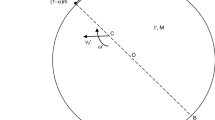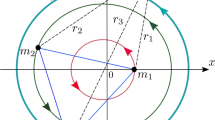Abstract
By appealing to the Poincare-Hopf Theorem on topological invariants, we introduce a global classification scheme for homogeneous, convex bodies based on the number and type of their equilibria. We show that beyond trivially empty classes all other classes are non-empty in the case of three-dimensional bodies; in particular we prove the existence of a body with just one stable and one unstable equilibrium. In the case of two-dimensional bodies the situation is radically different: the class with one stable and one unstable equilibrium is empty (Domokos, Papadopoulos, Ruina, J. Elasticity 36 [1994], 59-66). We also show that the latter result is equivalent to the classical Four-Vertex Theorem in differential geometry. We illustrate the introduced equivalence classes by various types of dice and statistical experimental results concerning pebbles on the seacoast.
Similar content being viewed by others
Author information
Authors and Affiliations
Corresponding authors
Rights and permissions
About this article
Cite this article
Varkonyi, P., Domokos, G. Static Equilibria of Rigid Bodies: Dice, Pebbles, and the Poincare-Hopf Theorem. J Nonlinear Sci 16, 255–281 (2006). https://doi.org/10.1007/s00332-005-0691-8
Received:
Accepted:
Published:
Issue Date:
DOI: https://doi.org/10.1007/s00332-005-0691-8




